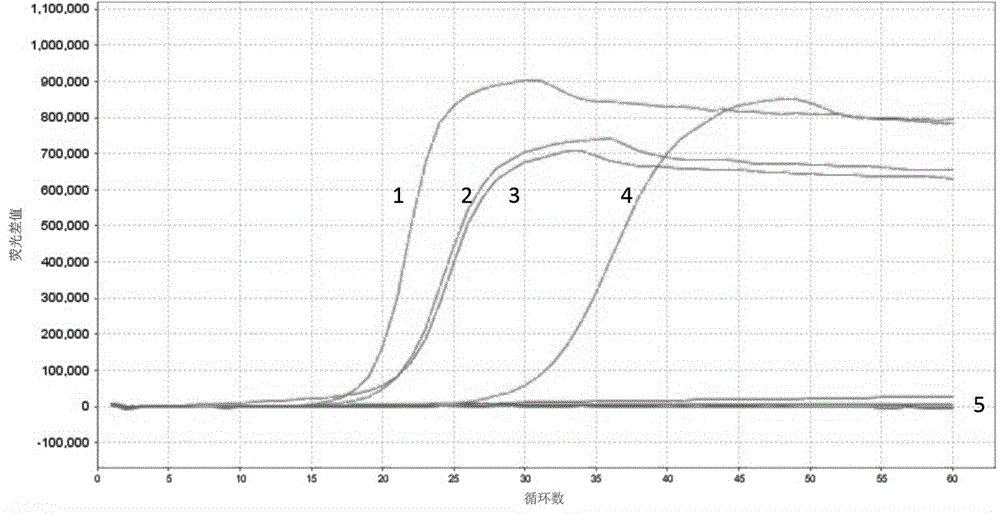Nucleic acid sequence for typing detection of cutaneous human papillomavirus and application thereof
A human papillomavirus and nucleic acid sequence technology, which is applied in the field of skin-type human papillomavirus typing and detection, and can solve the problem of lack of nucleic acid sequences for skin-type HPV detection methods.
- Summary
- Abstract
- Description
- Claims
- Application Information
AI Technical Summary
Problems solved by technology
Method used
Image
Examples
Embodiment 1
[0024] Design and screen primer nucleic acid sequences: First, compare the L1 segments of each skin type HPV, select the parts with large differences to design primer nucleic acid sequences, and design multiple pairs of candidate primers for each type; then artificially synthesize them with our team The standard viral nucleic acid and a large number of HPV-infected clinical biological samples were used as templates, and a large number of repeated polymerase chain reactions were performed using the above-mentioned pairs of candidate primers, and the obtained products were sequenced to verify the specificity and sensitivity of the amplification; finally, the specificity 30 pairs of primers with excellent sensitivity, the nucleotide sequences of the primers are as shown in SEQ ID No: 1 to SEQ ID No: 60.
[0025] The specific screening method includes the following steps.
[0026] (1) Randomly select a group of candidate primer pairs and carry out amplification reaction in a centr...
Embodiment 2
[0029] A method for detecting nucleic acid sequences of candidate primers for detecting HPV1 types.
[0030] (1) Randomly select a group of candidate primer pairs for HPV1 types, and perform amplification reaction in a centrifuge tube. The reaction system is 25 μl. The specific reaction system is 0.2 μM each for the forward primer and reverse primer, SYBR Green I, and 0.8 μM for dNTP , pfu DNA polymerase 2.5 U, 10× pfu Buffer 5 μl, 1 ng / μl plasmid DNA; set up a set of negative controls at the same time, use ddH to ddH the plasmid DNA in the above reaction system 2 Replace with O, and the rest of the components are the same; put the centrifuge tube into the fluorescent PCR reaction, set the temperature at 94 °C, pre-denature for 5 min, and then enter the following cycle: 94 °C for 50 s, 49 °C for 50 s, 72 °C for 1 min, 40 cycles, 72 ℃ for 5 min; then pick 3 sets of candidate primers and repeat the amplification reaction, from the obtained amplification curve, the primer sc...
PUM
 Login to View More
Login to View More Abstract
Description
Claims
Application Information
 Login to View More
Login to View More - R&D
- Intellectual Property
- Life Sciences
- Materials
- Tech Scout
- Unparalleled Data Quality
- Higher Quality Content
- 60% Fewer Hallucinations
Browse by: Latest US Patents, China's latest patents, Technical Efficacy Thesaurus, Application Domain, Technology Topic, Popular Technical Reports.
© 2025 PatSnap. All rights reserved.Legal|Privacy policy|Modern Slavery Act Transparency Statement|Sitemap|About US| Contact US: help@patsnap.com



